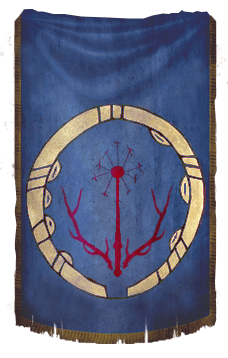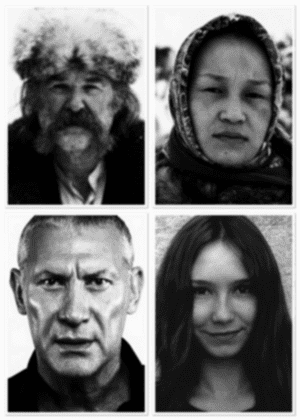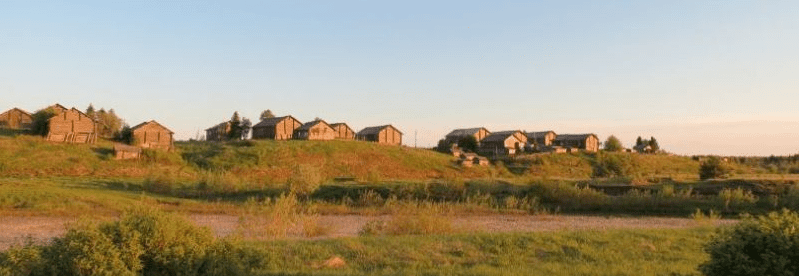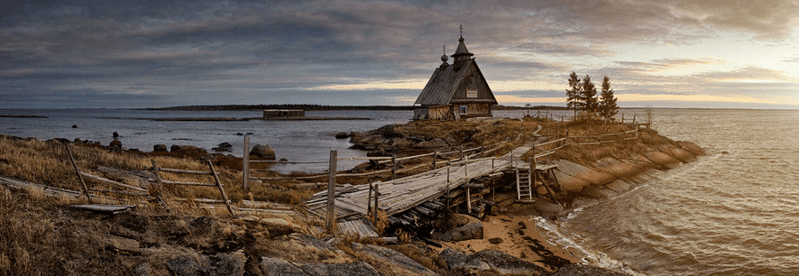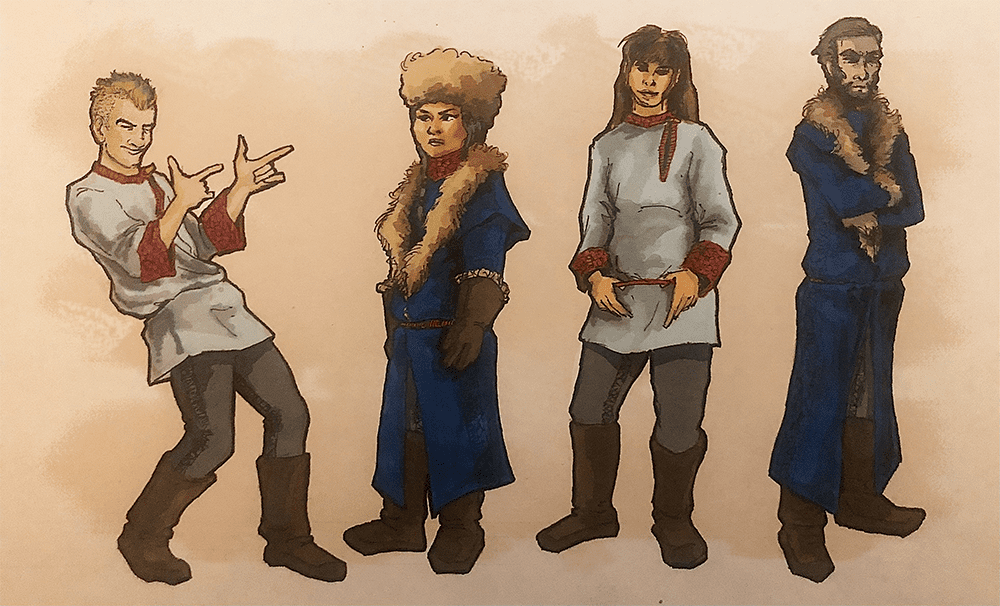Koldovstoretz
.......................................
.....................
.............
............................................................
.............
.............................
..........................................................
......
............................................................
.............
............................................................
.............
.............................
............................................................
.............
............................................................
.............
.............................
...........................................................
............................................................
....
............................................................
........
............................................................
.............
............................................................
.............
.............................
............................................................
.............
.............................
............................................................
............
............................................................
...........
............................................................
......
............................................................
.............
.............................................................
............
............................................................
............
............................................................
.............
............................................................
.............
.............................................................
..............
..............................................................
.............
..............................................................
........
............................................................
.............
............................................................
.............
.............................
.........................
.............................................................
............................................................
........
............................................................
............
............................................................
...........
.......
.............................................................
.......
..............................................................
..........
.............................................................
..........
.............................................................
.....
- Arkadiy Medvedev (1876 - 1942)
- Baba Marta (1902 - 1984)
- Balachkov (unknown - ±1950)
- Evgeniya Ignatova (1920 - present)
Koldovstoretz traces back its origin in the actions of four individuals. When Stalin started pushing his agenda in the 1920’s, folklore and magic were considered remnants of an old Russia that supported Tsarist traditions. As a result, wizards and witches were forced into a far more stricter lifestyle of hiding their supernatural interests and knowledge from the government institutions. In their predicament, children that showed magical affinity were no longer able to be sent on the open road towards the various communities of wizards and witches living further into the eastern part of the country. Travelling from city to city, a sixteen year old novice named Evgeniya Ignatova and her compatriot, a half-giant by the name of Balachkov would attempt to gather as many children and adolescent magic users they could. They were sent on request of a motherly figurehead of the Ket people known only as Baba Marta, a witch that lived on the plains beyond the Ural mountain range. The fourth member, Arkadiy “the bear” Medvedev, served as both guide and protector to her and her students. He was an ex-spy within the communist party on the run.
In their opposition both publicly and in secret, the four of them worked together under one singular purpose. To create a safe haven for magical children to be able to learn and grow with their magical affinities. Throughout the late 1930’s, they managed to set up a network that spanned the western part of the soviet union. While they still held contact with their eastern brothers and sisters, they were forced to leave them mostly to their own devices. Without any proper funds and open support, there were heavy limitations on how successful the four could execute their missions and hold their classes through the years. Due to a rivalry between Durmstrang Institute, a more remote and well-funded school up north, they were left with a much poorer demographic.
In their later years, the four were never able to escape the conflicts they met with their established government in muggle society. With Stalin’s Union of Writers making sure that more and more common folk got disillusioned by Russian folklore, there was less interest from parents leaving their children in the hands of strangers. In one attack in 1942, one caravan of children was even discovered and apprehended by Stalin’s investigators. Arkadiy lost his life whilst helping a handful of the children escape. Baba Marta stayed behind in the school, now formally acknowledged under the name of the Koldovstoretz Conservatory and became its first Headmistress. Evgeniya on the other hand stepped up and became a public figure openly opposing Russia’s government policies and even organizing coordinated protests. Balachkov remained by her side until his capture in 1949, when all traces of his existence vanished after his transportation to an unknown labour camp.
Out of the four founders, Evgeniya is the sole member still living today. Though she has tempered her actions, the fire of passion still burns within her now frail body. After teaching for some time at Koldovstoretz in a final support to the elderly Marta, she decided it was time for retirement after the latter’s timely passing. Lady Ignatova is now a familiar name to any respectable diplomat serving a magical community, as she still frequents committees concerning Magical Education.
.........................
..........................................................
............................................................
.............
.............................................................
............
............................................................
............
............................................................
.............
............................................................
.............
.............................................................
..............
..............................................................
.............
..............................................................
........
.........................
.............................................................
...
...........................................................
.............................................................
...
.............................................................
.......
.............................................................
.......
..............................................................
..........
.............................................................
..........
.............................................................
.....
..........................
..........................................................
......
...........................................................
............................................................
....
............................................................
...........
............................................................
......
............................................................
.............
.............................................................
............
............................................................
............
............................................................
.............
............................................................
.....
(Наташа Павлова)
Age: 57 (born 3rd of August, 1963)
Nationality: Russian
Blood status: Wizard-born
Natasha is taller than most females at 5’8”. You can often find her wearing either flats or boots rather than heels. Her long, chocolate brown hair cascades past her shoulder blades, to the small of her back. She often likes to tie it up in a ballerina bun or in a messy ponytail with volume. For color, her hair has lowlights that make the chocolatey hair shine in the sunlight.
The small waisted woman always tries to look her best no matter the circumstance. She will always doll herself up with makeup and pull her hair to one of her two signature looks. Natasha finds her appearance to be of utmost importance. First impression is everything and Natasha will always ensure that her plump lips are colored and her almond eyes are shadowed. Every morning, she finds time to exercise; toning her body to look its best.
Natasha’s apparel is often made up of A-line midi-dresses. The top may be strapless, fully covered or a sweetheart neckline, but the flow from her waist down will always be the same. This is always paired with her flats or boots.
Koldovstoretz' headmistress is quick-witted and charismatic when in conversation with all types. She loves to learn about others by asking them philosophical and open-ended questions. Natasha loves routine and her living off of structure gives her the need to guide others accordingly.
Past the point of mid-life crisis, Natasha makes sure to look the part. She will do all that she can to look younger than her age whether it be daily potion drinks or pills, or even using muggle methods such as botox or plastic surgeries. Natasha believes that as a woman in power, she needs to ensure that her first impression of appearance is just as vibrant at her diplomatic and charismatic skills.
When it comes to diplomatic strategies, Natasha wants to hear as many perspectives as possible before proceeding to a decision. Once her decision has been made, her stubborn streak prevents her from changing her mind so easily. If an idea or decision does not go her way, Natasha is not afraid to display disappointment, anger and frustration. She will share with whomever in conversation or in-contact how she feels at that moment. If very frustrated and angered, she will throw whatever is nearby her to try and make a point. Once her point is made, she reverts back to her usual self, her emotions lessened. Her being angered easily is what makes others a tad bit fearful of her. Natasha does try to hold her own when among other diplomats to create a good image of herself and her pride and joy, Koldovstoretz School.
Her anger stems from perfection. Natasha Pavlova is the daughter of Evgeniya Ignatova, one of the Koldovstoretz's founders. The weight and burden of keeping a school running to her mother's approval is Natasha's largest of many concerns. She will do everything in her power to ensure that the school is looked upon as successful in the eyes of many-- especially her mother.
Antonin Dolohov (Антонин Долохов)
Magic has soared through the lands of Russia since the beginning of time. Those who could obtain its magic lived freely. While keeping their magic away from маглы (magly = muggles), there was a balance between the two societies without much realization. As time progressed, маглы had begun to see things that they should not have and began to write different magical ideas to make sense of it all called folklore.
Children, when encountered with their first instance of accidental magic, would travel alongside in a pack to various teachers that hugged the Western hemisphere of Russia. Learning was often separated by gender where girls would learn the ways of the Vedma-- powerful female traditions-- and the boys would learn the ways of the Vedmak-- powerful male traditions. Later, as the school evolved with the world, the two groups were merged into one to avoid separation.
As traditions strengthened, маглы started to sense that there were other folk who were doing things out of the ordinary. Over time, there were two schools of thought when it came to magic among the маглы: The first was an artistic approach through storytelling and poetry (formalist) and the other was merely about legends that swept the Eastern European lands (Finnish). маглы of all types fed into both types of thought. Those of magic were not too keen on маглы focusing on their lives, not knowing the real truth of who they are, however, they were thankful that it was primarily a positive outlook.
It wasn’t until 1928 when Joseph Stalin and the rise of the Soviet Union. Within Stalin’s plan, he banned any study of folklore. Unbeknownst of the magical folk that lived among маглы, Stalin had created a fairly toxic environment to those who believe and who are magic. To go further, Stalin had created a group of government soldiers called the Russian Association of Proletarian Writers (RAPP) to censor, destroy and remove all folklore and faerie tales from bookshelves and in homes. Their initiative was to focus primarily on the science and nature of the world rather than its magic. In 1932, their title changed to Union of Soviet Writers as their intensity of censoring, removing and destroying such subjects increased.
To keep themselves safe, some witches and wizards stripped themselves of their magical belongings, living their lives as маглы. However, there were many that kept practicing their magic in secret, hoping not to get themselves caught by ongoing security checks. There was no way for children to travel in packs like they used to. Everything came to a riming halt.
An action had to be taken. Baba Marta, Evgeniya Ignatova, Arkadiy "the bear" Medvedev and the part-giant Balachkov rebelled against the norm and changed their traditions of magic. In 1934, the four of them opened a secret school on one of the islands in lake Onega, creating a safe haven for all magical children. Muggle travellers were bewitched to travel to the nearby school of Transfiguration whilst leaving the other smaller islands alone.
The Koldovstoretz School did not just take children who were of age, but rather children who displayed any first instance of magic at any age. It became more or less a school that fostered and boarded children of all ages (ranging from infant to teenager) safely away from the маглы society. The school not only hired specialists to help with the development of different ages, but they also brought about all the Vedma and Vedmak who lived alongside the Western Russian border. They were to help those of age harness their powers and enhance their abilities as mentors in the rebellion.
Many prayed and hoped that this new and inspiring way of teaching will lead the path for the next generation of magic.
Education Prior to 1928:
Magical children who reached of age (11 years old) would travel in packs of ten with a designated magical mentor. They would travel to the Ural mountains where they would learn some basics of protective and assertive magic. However, when they reach their destination, they are separated by gender and learn from strong Vedmak (wizards) and Vedma (witches). Their skill is primarily on traditional magic that takes on the force of nature.
Education during 1928-1991:
In 1928, the rise of the Soviet Union shifted the magical realm in Russia unexpectedly. Joseph Stalin banned the study of folktale which made magical folk that lived among маглы to be a part of a toxic environment. Later, there was an initiative to focus Russia on the science and nature of the world rather than on its magic through a group of government soldiers called Russian Association of Proletarian Writers (RAPP) or later named the Union of Soviet Writers.
Magical folk were fearful of their children as their ability to control their magic was limited. It was unknown whether or not their children’s magic would surface in front of other маглы and knowingly how other маглы would react, they kept to themselves, preventing their children from learning magic as they did not want them to be executed on their way to the Ural mountains.
The more families prevented their children from learning magic, the less of a new generation there became. It wasn’t until 1937 when four founders put together a school and new educational system to help magical children in Russia to safely and productively learn magic. They did not wait, however, until children were of age. They accepted all students who surfaced their magic into the school, ranging from infant to teenager. While there were some families that did not want to part with their families (especially children at such a young age), there were many families that sacrificed their want of an intact family and brought their children to the Koldovstoretz School. Eventually, through the use of portkeys, the threat of persecution was significantly decreased save for one major incident in 1942.
Due to the various ages that the school held, they were not put together by how old they were but rather by their skill. This resulted in groups in ages that were mixed. Children were accepted into the school throughout the academic year and placed into the various groups. They are as follows:
Infants to Toddlers (approximate ages 1 to 5)
Group 1: A form of daycare with magic supervision. They would watch children who just had their magic surface. They would care for their needs and teach them minute ways of keeping their emotions regulated through social-emotional development.
Primary School (approximate ages 6 to 12)
Group 2: Beginner -- Children do not have any control over their magic although it has had time to surface. They are unable to bring their magic forward when needed. Children do not have a clear understanding of magic as a whole.
Group 3: Intermediate -- Children have some control over their magic after it has had time to surface. They are able to summon magic on their own with limited stamina. Children have an understanding of magic and what it can do.
Group 4: Advanced -- Children have control of their magic. They are able to summon magic with a longer period of stamina. Children have a complete understanding of magic and some of its properties. It is only at this group they are able to begin training. Mentors who overlook this group are able to pinpoint where the child will begin their training by their skills in duelling, potions or traditional nature magic.
Secondary School (approximate ages 13 to 17)
Group 5: Duelling -- Children primarily focus on duelling with others to increase stamina and strategy. They learn charms, jinxes, spells and more. The training is almost army or militant-like.
Group 6: Potions -- Children primarily focus on practicing, creating or exploring potions as a military export. Children who are a part of this group also partake in the Potions Competition worldwide.
Group 7: Traditional Nature -- Vedmak and Vedmar have traveled from the Western Russia border to Koldovstoretz School to train those who have traditional magic with nature. This group is for children who have a skill in the traditional Russian magic and it is not treated as militant-learning. Children are separated by gender to learn among their Vedmak and Vedma.
Education after 1991:
At the fall of the Soviet Union, there was discussion of whether or not to close the school and remain back to how Russian magic was taught in traditional times. However, with over 60 years established, the Koldovstoretz School remained open.
Children of all ages were still welcome to the school, however, it was not mandatory for families to separate their families for their young child to enter school. They were given the option to board their child at any age to the school, however, when children reached the age of 11, they were of age to partake in their magical studies.
Groups were still taught by skill and not by age. For example, there can be two 11-year-olds who enter the school. One can control their magic while the other could not. The first would be in Group 4 while the other would be in Group 2 in their learning.
Quidditch at the Koldovstoretz School
The Koldovstoretz School was also known to partake in the on-campus sport, Quidditch. However, their use of brooms was limited. Koldovstoretz Quidditch Players did not use broomsticks like most of the other Eleven Schools. Instead, they were renowned to ride on fully grown trees as their means of levitation.
This was extremely meaningful during the years of the Soviet Union as folklore was banned and if one was caught doing something “magic” with a broomstick, they would be reported to the RAPP. The use of trees was easy to leave behind without question. It, instead, looked like a natural disaster rather than a magical incident.
The location of Koldovstoretz was situated beyond the Ural mountains. It is said by her oldest students to have been built on thegrounds of Baba Marta's old tribe. This is purely based on speculation as the old Director herself never confirmed these rumours. It was the tales she could tell of the land that made her students suspect such things. Baba Marta called the school grounds their own little "Palace of Magic" a taunt towards those looking to rid the world from her magical heritage as back then, all forms of folklore and magic were considered supporting the old tsarist views that were meant to have passed away with the last Tsar's own demise. It was this same persecution that caused Baba Marta and her colleagues to travel further eastwards into the countyside. Though there was no actual palace to be seen there. It was rather the community itself that Baba Marta felt was where her palace stood. It travelled with them.
There were plains of grass with patches of forrest scattering the land. The village itself was expanded along the shores of a river. The grounds showed remnants of an older way of life. It used to be that children all over Russia were sent east to find the small magical villages that would teach them all they know. Each village had their own traditions and rituals and thus left their own mark on the magic they left behind. With older cottages repaired to the best state they could maintain and sets of yurts bundled together in the more open areas, there was no building higher than ten feet in Koldovstoretz. The largest house, or rather Izba, would have been the main hall. Which was where they gathered all students around for their meals or important announcements. Sometimes even the regular festivities, but this was only done indoors if the weather did not permit it to occur outside.
Students attending different classes would be seperated into the different houses spread around the grounds. Theory classes were usually taught in the sturdier logwood cottages facing the northern banks of the island. Practical lessons were given out in the open fields a little ways south from the camp, with several large yurts being refurnished into classrooms for when shelter was needed. The lake itself played a huge factor in the way of life for the inhabitants of Koldovstoretz. Usually all sports revolved around playing it either in or above the water. Fishing and other such skills were taught to those who wished to learn a more survivalist approach to life.
The eastern side of the village also harboured the old ruin of Koldovstoretz's only tower ever built. It were Balachkov and Medvedev who tried erecting this building in an attempt expand both their awareness of the area as well as their own security. Sadly the unfinished tower would have never survived what was to come regardless of their success.
In the year 1942, the conservatory came to be under attack after a newly arrived group had led its attackers to the village, via portkey. Medvedev lost his life in the line of defence and the church was torn down at once by the government persecutors. While Koldovstoretz has rebuilt itself from this, it has not attempted to get the tower back up. Nevertheless, there is a part of the large main bulding reconstructed for alternate use. The old ruin now houses a select underwater set of classrooms and tunnels that serve the purpose of housing the school in times of danger and, in the time preparing for danger, also functions as the classrooms for combative magic. This is where students of Koldovstoretz are selected to learn and fend for themselves as well as protect the conservatory.
Artist: Caradoc Browne
The uniforms worn at Koldovstoretz Conservatory were based on practicality and followed basic styling from Russian culture. Students were mostly found studying and learning in a light blue rubakha with red lining around the collar and sleeves. The collar was fastened with a wooden toggle. When the seasons got colder, a dark blue kaftan would be worn with a fur-lined V-shaped pattern across the chest. Sturdy boots were meant to withstand the rough terrain and especially the mud that would cover the village streets. It also allowed for ease of travel along the shallow edges of the lake. If a students wished for it, they could wear a woolen papakha for keeping their head warm. There was no distinction between your uniform, sports-gear or any type of recreational clothing. The weather was what decided the students would wear for the day.*Lore by Maya Galim, Caradoc Browne & Meenauh Silmataurea.
This is the "Game Master" account. Please do not owl this account, unless specified. This account is not moderated actively and therefore, you may not receive a response.
Contact a Head of House or the Headmaster if you need anything.
